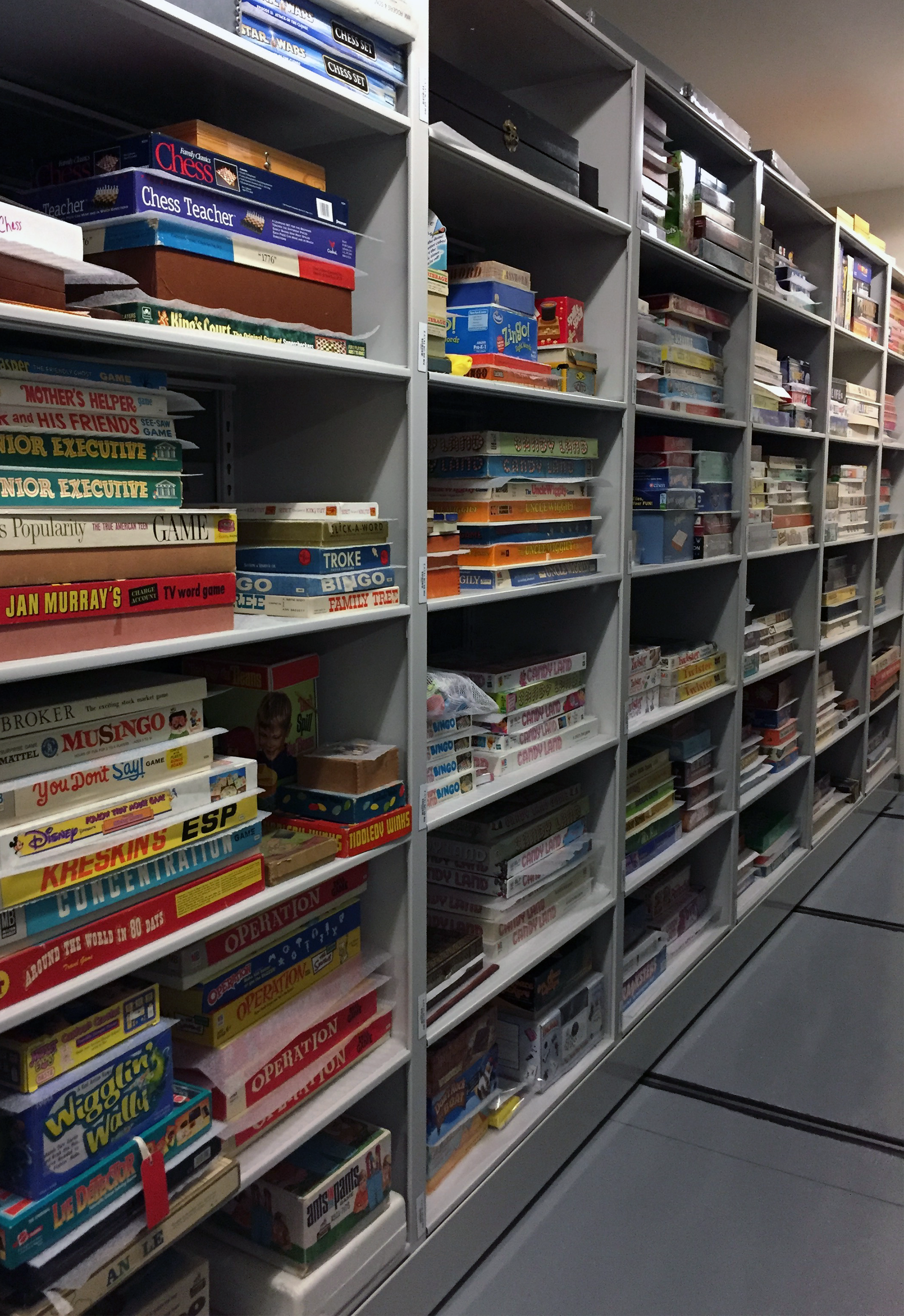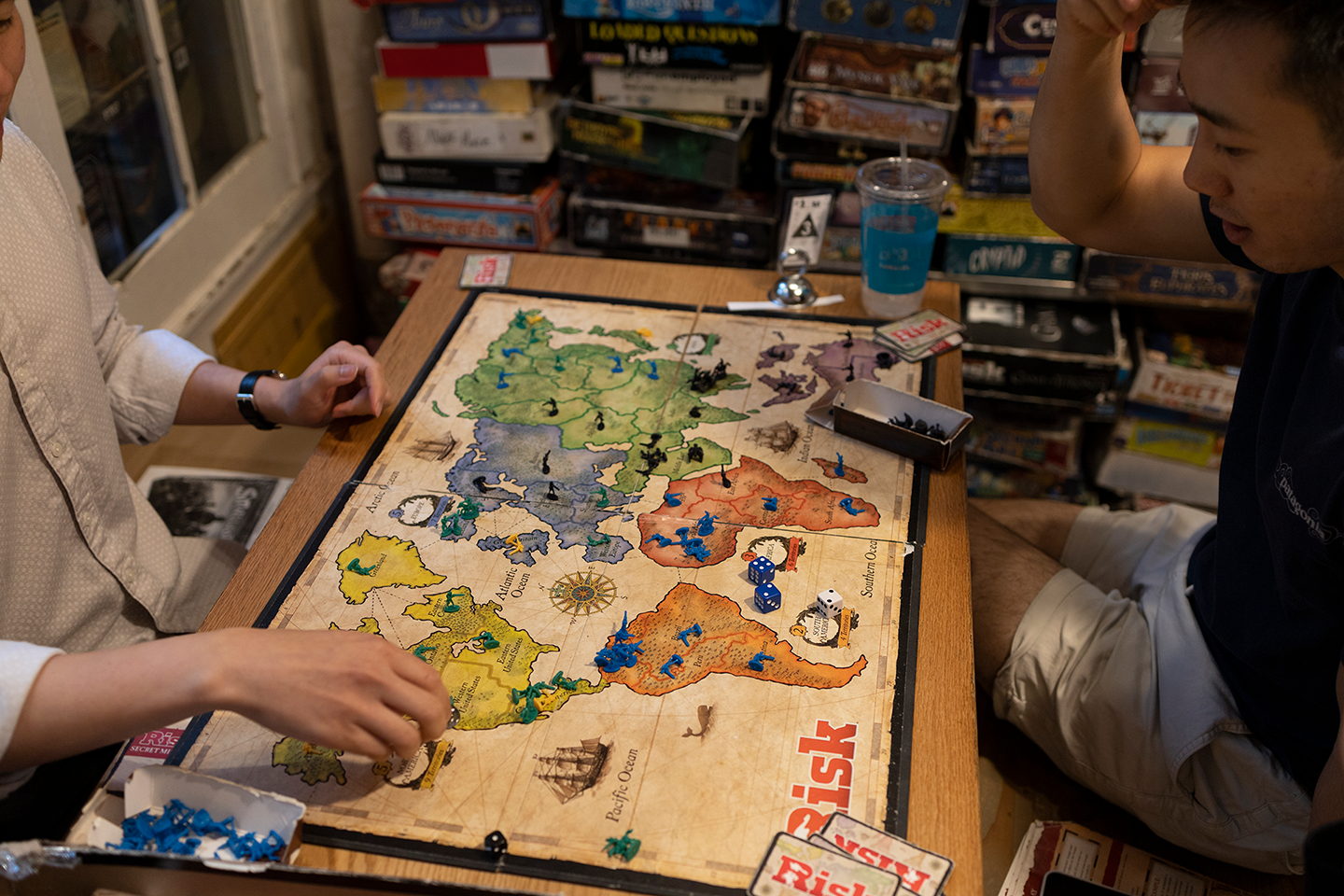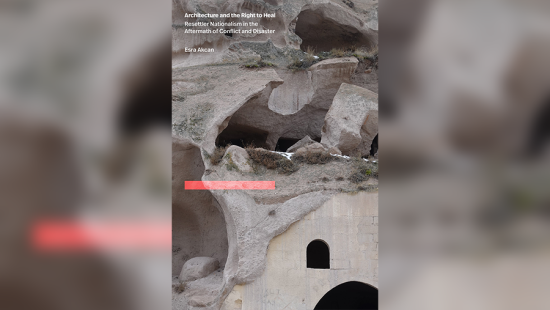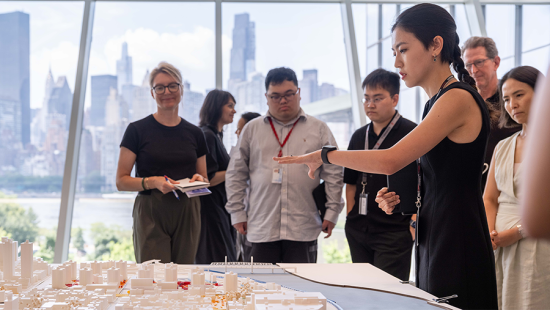"I have to admit that the only board game I really played as a kid was Monopoly. I was always the banker, and I always cheated," confesses Architecture Professor Medina Lasansky with a conspiratorial laugh while sharing the inspiration behind Playing Place — Board Games, Popular Culture, Space, a new book out from MIT Press which she edited in partnership with Chad Randl (Ph.D. HAUD '14). The volume, printed in full color and rich with imagery, collects 38 essays by contributors spanning a wide range of experience and expertise that illuminate, as the editors' introduction explains, "what board games, past and present, tell us about larger place-based cultural attitudes, assumptions, and anxieties."
The impetus for the book came out of Lasansky's Archi.Pop class, which draws connections between architecture and design and popular culture. One unit asks students to play a board game and think about how that relates to their understanding of space.
Details of The Game of Life's plastic car and pegs. image / courtesy Medina Lasansky
"Students should know about pop culture when they go out in the world, and I encourage them to think about board games like everyday life," Lasansky says. "A lot of people play with games and toys, and it helps them think about ideas about space and place without them knowing it. I used to teach the Italian Renaissance, and it took me so long to get students up to speed and to be able to ask interesting questions, whereas in Archi.Pop, they know all this stuff, so they can begin right away being creative and thinking critically."

Game archives at the Strong National Museum of Play. image / provided
The Strong National Museum of Play in Rochester also proved to be an invaluable resource in developing the project. Housing an archive of some 29,000 games and employing a very helpful archivist, trips there introduced Lasansky and Randl to the amazing range of options available — from the weird to the scandalous to the inspiring, and even the original blueprint to Scrabble, which as it turns out was designed by an unemployed architect.
In the midst of planning the book, COVID hit, which Lasansky suspects led them to a better, more accessible project in the end. Renewed interest in board games paired well with their decision to take a more relaxed approach to what was originally envisioned as a collection of long articles rather than the shorter essays covering a wider range of games that they eventually commissioned. They tapped contributors who they knew would have fun with the project while also bringing scholarly insights to the table. Some covered the usual suspects such as Life, Risk, and Monopoly, while others dove into more obscure childhood favorites such as Barbie Queen of the Prom and Uranium Rush.

Coeditor Chad Randl (right) playing (and likely losing) Chutes and Ladders with a childhood friend ca. 1975. image / courtesy Chad Randl

Playing Risk at The Uncommons, a board game cafe in Manhattan, in 2021. image / courtesy Mike Babcock
In addition to the editors, many contributors carry Cornell connections. Jeremy Braddock, Associate Professor of English, wrote about Masterpiece. Diana Garvin (Ph.D. '16) selected Ethiopian games of conquest, and Richard Ruth (Ph.D. '07), who now teaches at the Naval Academy, focused on King of Siam. Ph.D. candidate Athanasiou Geolas picked up Scrabble, while Whitten Overby (Ph.D. HAUD '16) covered Trump the Game (yes, that one). Ruth Lo (M.S. HAUD '09) selected Mount Everest mountain climbing games, and Trudi Sandmeier (M.A. '00) did a deep dive on Disney games. CRP Associate Professor Jenni Minner wrote about a precursor to Monopoly and then Architecture Assistant Professor Samia Henni wrote about Taudis-Poly, a parody of Monopoly involving a public housing project.
"I think Chad and I had a lot of fun with the project," Lasansky reflects, "but in the end you learn a lot, so it's also quite serious."
For a complete list of contributing authors and a preview of this title, please visit the MIT Press website.
Playing Place — Board Games, Popular Culture, Space, edited by Chad Randl and D. Medina Lasansky is one of many recent faculty publications to be featured in AAP's annual Launchpad event on April 17, 2024. Launchpad is held in Milstein Hall and is free and open to the public. The event includes presentations by the authors as well as a reception with opportunities to peruse and purchase many of the publications.












